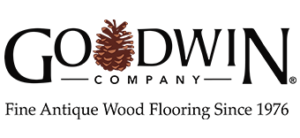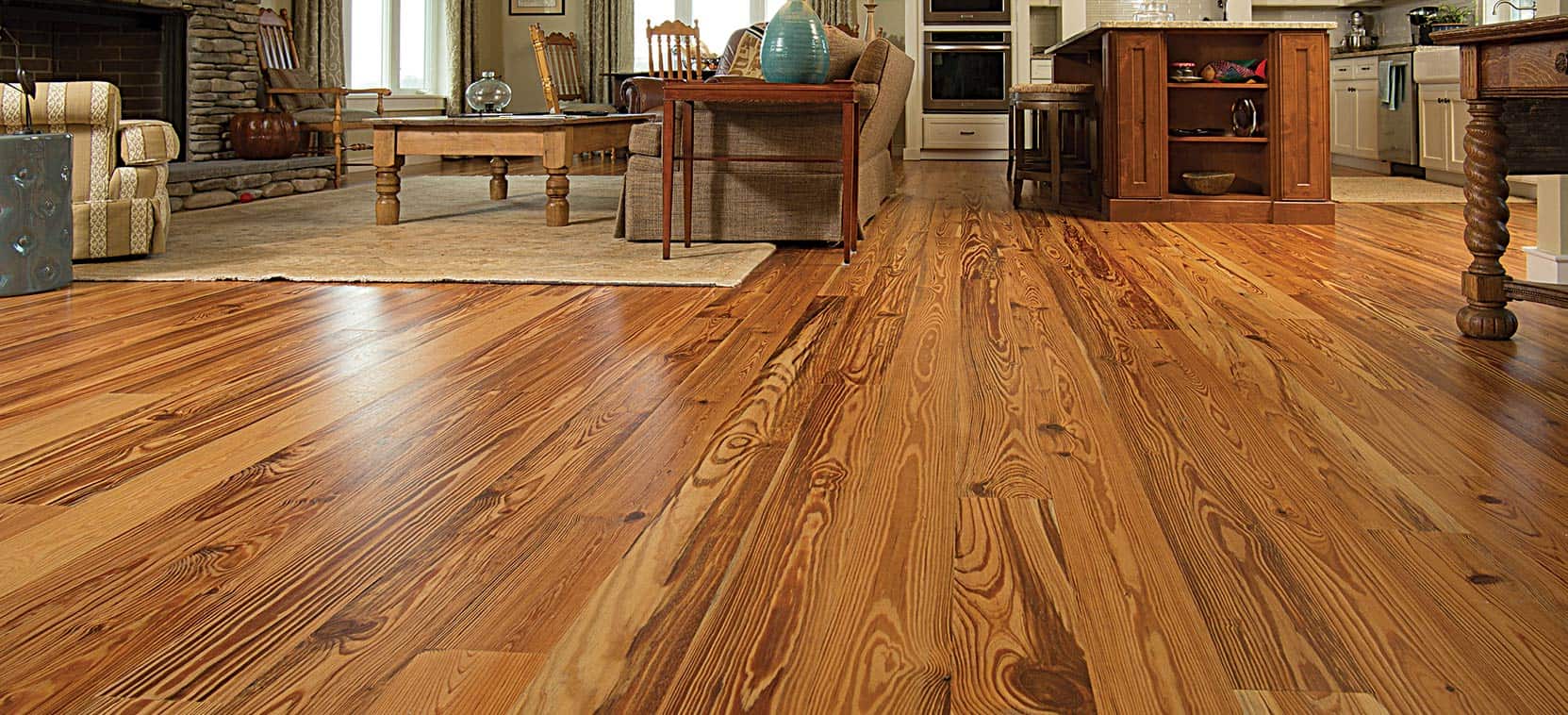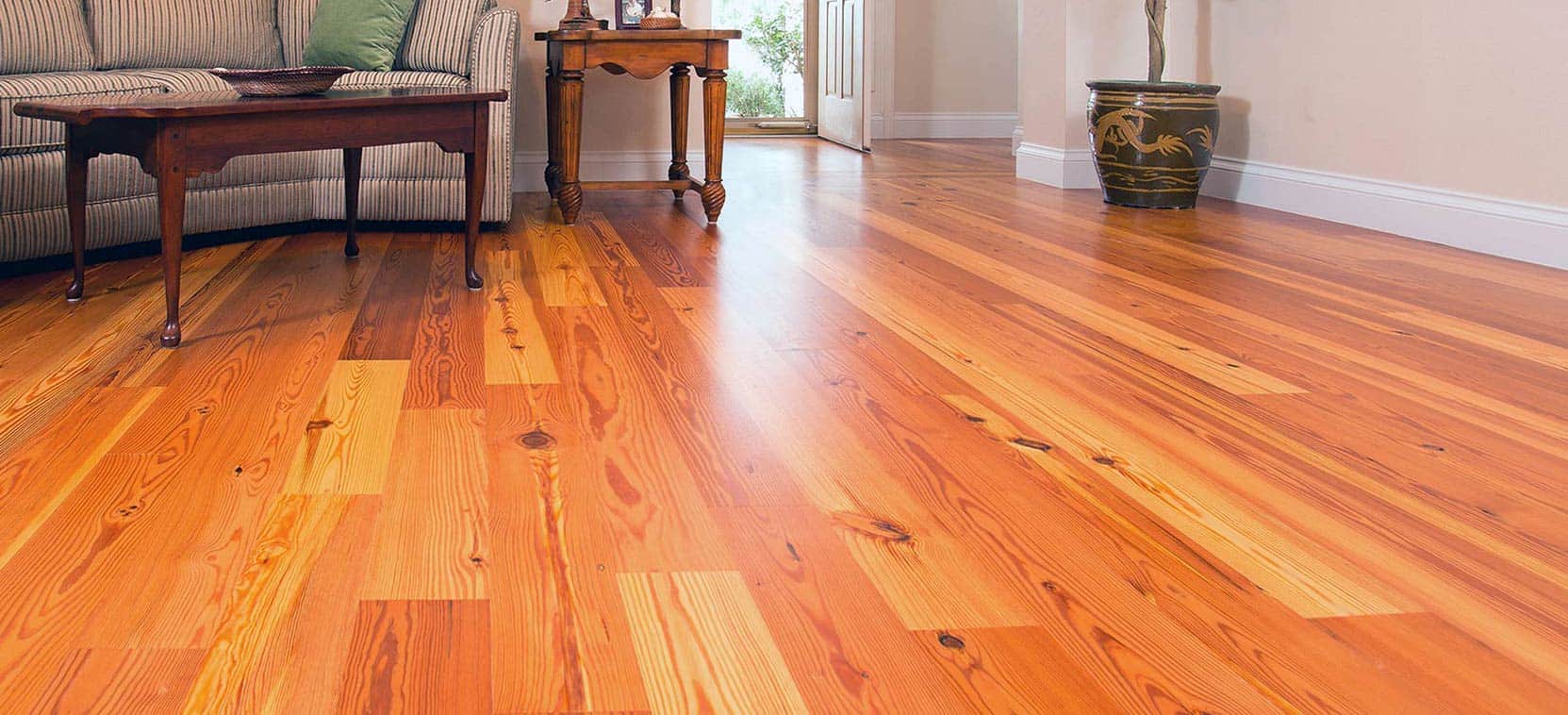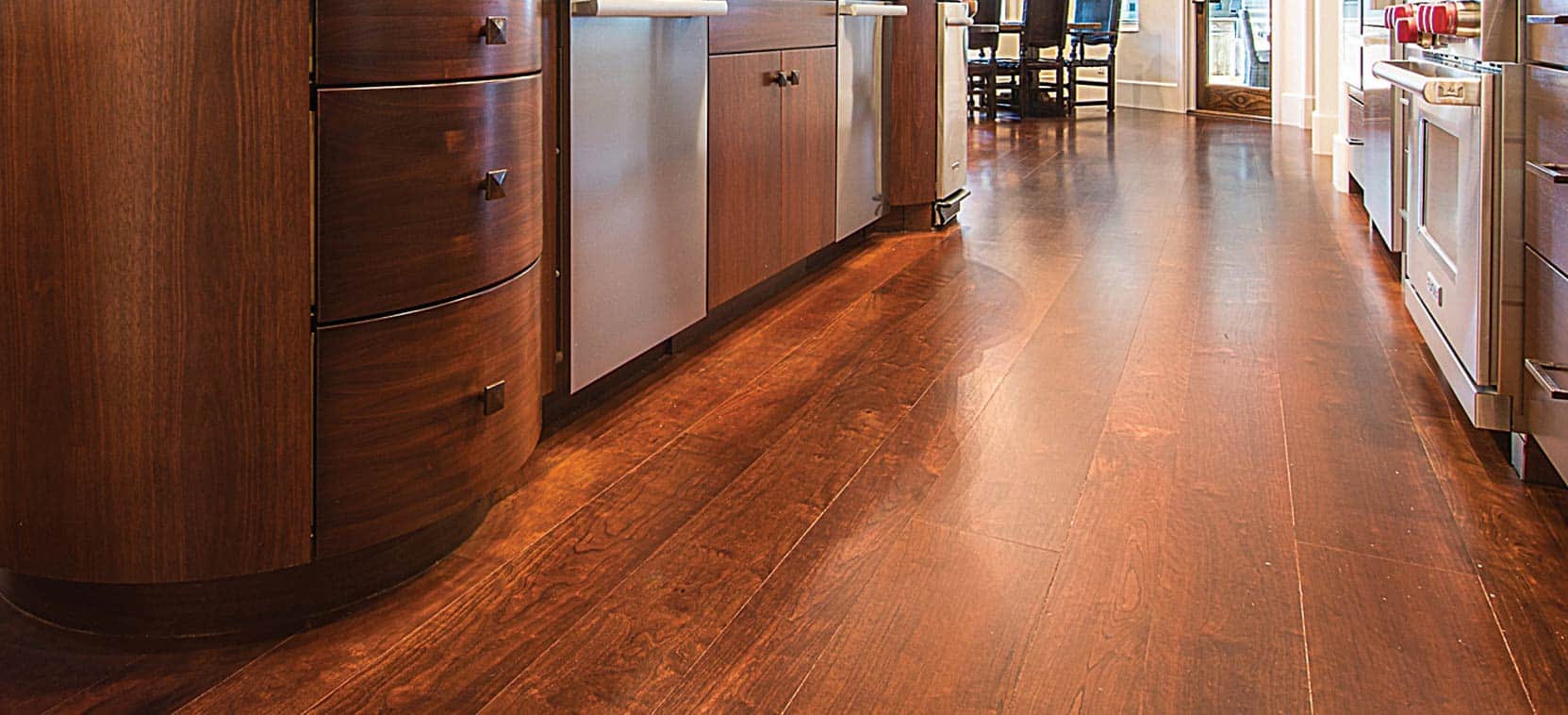Learn more about Heart Pine Wood Flooring. Get answers to commonly asked questions you should keep in mind for your project.
Here are some common questions our clients asked us prior to purchasing their wood floor and we think you should keep them in mind when shopping for the ideal wood floor for your home or upcoming project.
Is the wood from the longleaf pine?
Longleaf pine is the best source of antique heart pine. Some companies sell Southern yellow pine, loblolly, shortleaf pine, slash, or a combination and call it heart pine. Although they are pine and have heartwood, antique longleaf pine-especially the river-recovered wood® is stronger, more durable, more stable, and has a richer patina and color.
Is it truly antique? Or how old was the tree when harvested?
The only way to get heartwood is time. According to the USDA Forest Service book “Longleaf Pine”, it takes 200 years for a longleaf pine to become mostly heartwood and to be considered antique. Scientists say any wood from a tree less than 200 years old is “new heart pine.” A 75-year-old tree will average only 30% heart, and even a 130-year-old tree yields wood that is not as hard or rich in color as antique heart pine. U.S. Forest Service specialists report that even a 200-year-old tree will average only 65% heartwood.
Note: Goodwin’s heart pine is from trees 200 to 500 years old.
Alert: “Old-growth” does NOT mean antique. The term is used loosely and often refers to new heart pine.
Is it 100% heartwood?
A tree has two components: heartwood and sapwood. Heartwood is prized because its tight grain means it is stronger and more stable. In other words, more is better. Less heart, which means more sapwood, results in softer wood that can be scratched and dented. Heartwood hardness and strength come from its resin, and longleaf has more resin than the other 200+ species of pine.
Plus, longleaf heartwood is beautiful. The grain is not your usual oak pattern (found in 75% of homes) and is a rich, red color thanks to the resin. One hundred percent heartwood means the color will be consistent. Even 98 percent heart will have yellow sapwood streaks that produce a strong/obvious color variation.
Alert: Lesser grades can have up to 50 percent sapwood and may still be called heart pine.
Are there at least 6 growth rings per inch?
Each pair of light and dark rings is from one growing season. When pairs of rings are very close to each other it means the tree grew slowly and the wood had time to become dense and strong. Longleaf pine trees usually grew only an inch in diameter every 30 years and lived 400 to 500 years. It’s no wonder the wood is so hard and durable. True antique heart pine has at least 6 growth rings per inch. Four or fewer indicate new-growth trees.
Note: Goodwin exceeds industry standards by offering premium grades that have 8 or more rings per inch.
What size and type are the knots?
The last time professional standards were published for heart pine was 1924. After the forests were cleared, they no longer were needed. However, the 1924 specifications allow for knots to be no bigger than 1½ inches in diameter and specify that knots must be sound (not loose or open).
Note: Knots are infrequent in the better grades of antique heart pine.
Note: Goodwin exceeds 1924 standards.
What about pitch pockets, checking, and nail holes?
Pitch pockets are crystallized resin pockets and should be solid or easily filled. Only pockets 1/8” or less are allowed in antique heart pine. Checking (or tiny surface cracks) is natural in antique heart pine due to its high resin content. Checks are easily sanded out after installation and will not be noticeable. Building-reclaimed heart pine usually includes nail holes. Better grades allow nail holes that are no more than ¼ inches and only infrequent on the boards. Building-reclaimed heart pine may also include nail staining around the nail holes or on some areas of the boards.
Do you guarantee you will deliver what is specified?
We recommend you use the terminology provided by the Reclaimed Wood Floor Association when you specify the grade you want for your project. Get your grade in writing to guarantee you get what you specified. Larger, more established manufacturers will spend a great deal of time with you from planning to installation to ensure you get the floor of your dreams.











